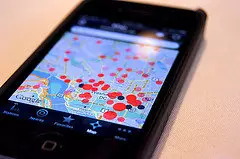The Essence of Gamification

The Essence of Gamification for E-Learning

Game mechanics are employed to engage users, create extended periods of interaction and to reward engagement in order to ensure loyalty. This is the essence of gamification. We encourage you to utilize these game mechanics when you are designing or creating any training or e-learning content applications:
- Feedback – This is meant as immediate feedback or responsiveness to your actions. You know that those “thumbs up” from Facebook are a good example of providing feedback, but what does that really “do”? Essentially, immediate feedback and action responses serve as a way of encouraging users to increase or continue activities. Things like messages, congratulations for hitting goals, and encouraging further interaction serve as rewards that motivate users to expand their interaction. Why else would Facebook keep track of the numbers of comments, likes, etc.? Why else would they notify you that someone has “liked” your posts?
How it applies: Any training or e-learning must be responsive to the user’s success by offering congratulations for goals reached. Make sure you incorporate a feedback loop into your content design.
- Standings/Metrics – Have you ever looked at a LinkedIn profile and seen that it has a status bar that shows “Completion”? This is a form of “standing” that speaks to the user in terms of completion or progress. Other examples of standings include general leaderboards, number of clients, or even bids won. You can see how this would automatically cue users to feel competitive, to gauge their performance against others, and to adjust their interaction to present their most “victorious” selves. If you make standings and metrics available, most likely you will see more completed profiles, more frequent participation, ongoing interaction, and updates.
How it applies: Any system for training must provide users with their status reports, how far along they are in any given session/chapter, and how they are performing over time – such as their “averages”.
- Goals – Users want to experience success. You can create the kind of interactions that give them value when they meet specific challenges or missions. Step by step tutorials, self-evaluation tests, milestones…these are all gamification elements that can help users enjoy richer experiences. If you visit the Elance website and look at user profiles, you can see clear examples of the value of goals. Those who seek to gain clients through the site are able to do self-assessment tests, and attempt to get specific certifications to bolster their standings. This enhances the value of their profile and engages them in a much deeper level. The website Mint.com is another great example of this type of gamification as it asks users to create basic goals, and then the site builds upon them and cues the consumer to strive for bigger financial goals.
How it applies: Be certain to build clear-cut milestones into any training session and to an overall e-learning program. This promises the user that not only are they are moving along in the right direction and are nearing completion, but also ensures that they continue in order to reach their target goals and objectives.
- Accomplishments – Accomplishments are different from goals in that accomplishments are earned through the use of “badges”. These badges will usually have value only within a limited “community”. For example, any labels or badges that identify a professional as having industry expertise or achieving certain levels of training or certification also bestows on them prestige and recognition amongst their peers and customers. Fitness professional Jillian Edwards relies on this form of gamification for her website.
How it applies: Be sure that any user can see their level of achievement through a specific system of stars, badges, tables, and charts. Visual acknowledgement of progress is imperative to successful gamification.
View related articles: